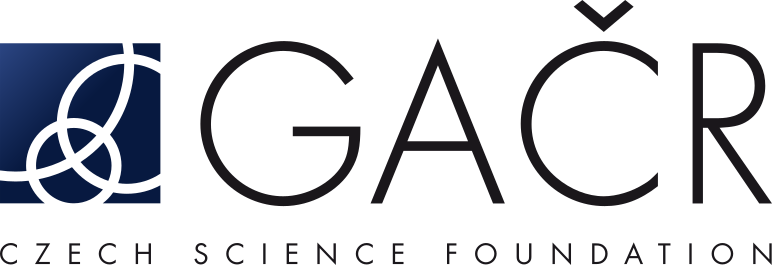Projects
During the last years, 5GM continuously participates in number of international and national research projects, including projects founded by the European Commission or Czech Science Foundation. The topics of the projects focus on fundamental as well as applied research in area of emerging techniques for mobile networks.
- Focused on RRM for networks combining cognitive radio and small cells
- Research project no. P102/13/24931 funded by Czech Science Foundation
- 02/2013 – 12/2015
The main purpose of the project is to combine two major concepts allowing further capacity enhancement of heterogeneous wireless networks; cognitive radio and small cells. In order to guarantee high efficiency, self organization nature of small cells and overall improvement of existing wireless networks, several algorithms and necessary procedures are proposed during the project addressing the issues closely related to radio resource management such as power control of small cells, interference management and radio resource allocation.
- Focused on merging small cells with cloud computing
- FP7 project no. ICT-318784 funded by European Commission
- 09/2012 – 04/2015
TROPIC is an Specific Targeted Research Project (STREP) of the 7th Framework Programme of the European Commission. The goals of TROPIC are aligned with objectives ICT-2011 1.1 “Future Networks (subtopic: Wireless and mobile broadband systems)” and ICT-2007.1.2 “Cloud Computing, Internet of Services and Advanced Software Engineering”. TROPIC is a consortium of 10 partners coordinated by UPC.
Femtocell networks are currently seen as the new communication paradigm for the ever-increasing ubiquitous wireless traffic demands. Being pervasive by nature, its proximity to the subscriber opens a new world of possibilities for the development of applications. Among them, cloud computing services demanded by smartphones could be moved from large server farms to HeNBs, provided that these are equipped with computational and storage resources, thus improving user experience on latency and download/upload speed.
TROPIC addresses this scenario by exploiting advanced MP2MP communications schemes, innovative virtualization procedures, and a cross-layer approach to the allocation of resources understood in a wide sense: radio, computational/storage capacity and energy.
TROPIC work programme includes the definition and characterization of the system level building blocks and their required interfaces for the implementation of a full system emulator and the development of a proof of concept platform.
- Focused on mobility (NCL, admission, handover) in 4G+ networks
- Research project no. P102/12/P613 funded by Czech Science Foundation
- 01/2011 – 12/2014
The objective of the project is to improve mobility management in future mobile networks by exploitation of prediction. To meet this high-level objective, the mobility management is addressed from several perspectives represented by individual stages of mobility management, i.e, neighborhood scanning, call admission control, and handover decision.
- Focused on interference and RRM in OFDMA networks with femtocells
- FP7 project no. ICT-248891 funded by European Commission
- 01/2010 – 12/2011
FREEDOM is an Specific Targeted Research Project (STREP) of the 7th Framework Programme of the European Commission. The goals of FREEDOM are aligned with the objective ICT-2007.1.1 “The Network of the Future”. FREEDOM is a consortium of 8 partners coordinated by UPC. The planned activities target at providing a new vision of a femto-based network, giving solutions to the major concerns about the foreseen mid-term (2011-2012) massive deployment of Femto Access Points (FAPs).
In the recent years there has been an increasing demand for mobile traffic due to the large nomadic population and the type of applications to be employed. This has motivated that the near-future 4G networks must enhance their efficiency in terms of spectrum, energy and cost. The solution addressed in this project is the use of femtocells and it is also considered by several mobile operators (e.g. T-Mobile Europe, TELECOM-Italy and Vodafone in Europe; NTT DoCoMo and Softbank in Japan; O2/Telefonica, Sprint, AT&T Mobility and Verizon in the US; and Chunghwa in Taiwan) and different standards, such as IEEE 802.16m and LTE-Advanced.
Currently, femtocells and macrocells are seen as isolated networks, competing for the resources available in the common spectrum band, at the cost of injecting interference to the whole system. FREEDOM project faces key technical and industrial concerns about the foreseen mid-term massive deployment of femtocells by adopting a new approach based on cooperative/coordination paradigms, enabled by the quality-limited ISP backhaul link. The project does not disregard the approach of isolated networks because it is met when there is not enough backhaul link connecting femtocells and macrocell.s In order to guarantee a strong focus and efficiency, FREEDOM focuses on:
- Advanced interference-aware cooperative PHY techniques
- Improvement of the control plane procedures for seamless connectivity
- System-level evaluation and hardware demonstrator of the proposed femto-based network architecture
http://cordis.europa.eu/news/rcn/30300_en.html
- Focused on OFDMA networks towards IMT Advanced requirements
- FP7 project no. ICT-215282 funded by European Commission
- 01/2009 – 12/2010
The FP7 ROCKET project aims at designing Broadband Wireless Access (BWA) technology that enables a larger number of users to be served at a high data rate in both urban and rural deployment scenarios. The technical approach relies on the combination of 1)advanced coordination and cooperation of Base Stations (BS) and Relay Stations (RS) in order to increase the area spectral efficiency 2)operation on larger bandwidth, including an opportunistic/flexible spectrum usage that adapts to the different capabilities of the network devices (BS,RS,MS) 3)optimized signaling that minimizes the MAC overhead for basic functionalities such as scheduling and handover and the backhaul load required to support the advanced spectrum usage, mobility (i.e. handover) and cooperation mechanisms defined in the project. Finally, the antenna integration constraints and the implementability of selected key algorithms will be studied thanks to a state-of-the-art hardware and software prototyping platform.
http://cordis.europa.eu/publication/rcn/10226_en.html
- Focused on relay stations in OFDM systems
- FP6 project no. IST-027675 funded by European Commission
- 01/2006 – 12/2007
FIREWORKS project aims to enhance OFDM(A)-based Wireless Metropolitan Area Networks (WMAN) and Wireless Local Area Networks (WLAN) technologies with novel concepts such as multi-hop architecture, flexible relaying deployment and cooperative communication with final objective to design and specify a next generation Broadband Wireless Access (BWA) system whose capabilities are validated and demonstrated by a prototype. Future BWA systems must have the ability for fast rollout, scalable and cost-effective network deployment in highly diverse propagation environments while exceeding current coverage and capacity capabilities. Some of the benefits for telecom operators are the reduced investment risks, the higher scalability to customer expansion and the provision of high and profitable QoS. End-users will enjoy ubiquitous access independent of propagation conditions and landscape variations. The introduction of Relay Stations (RS) into WMAN produces a significant increase of the link quality which leads to throughput enhancement and coverage extension. In FIREWORKS, the core system operation is based on the exploitation of advanced PHY techniques, the optimization of the Medium Access Control (MAC) and the design of novel Radio Resource Management (RRM) functions for the multi-hop architecture provided by means of relays. Finally, the development of the FIREWORKS prototype can provide sufficient insight for the evaluation of the economic viability of the relay based network concept.





